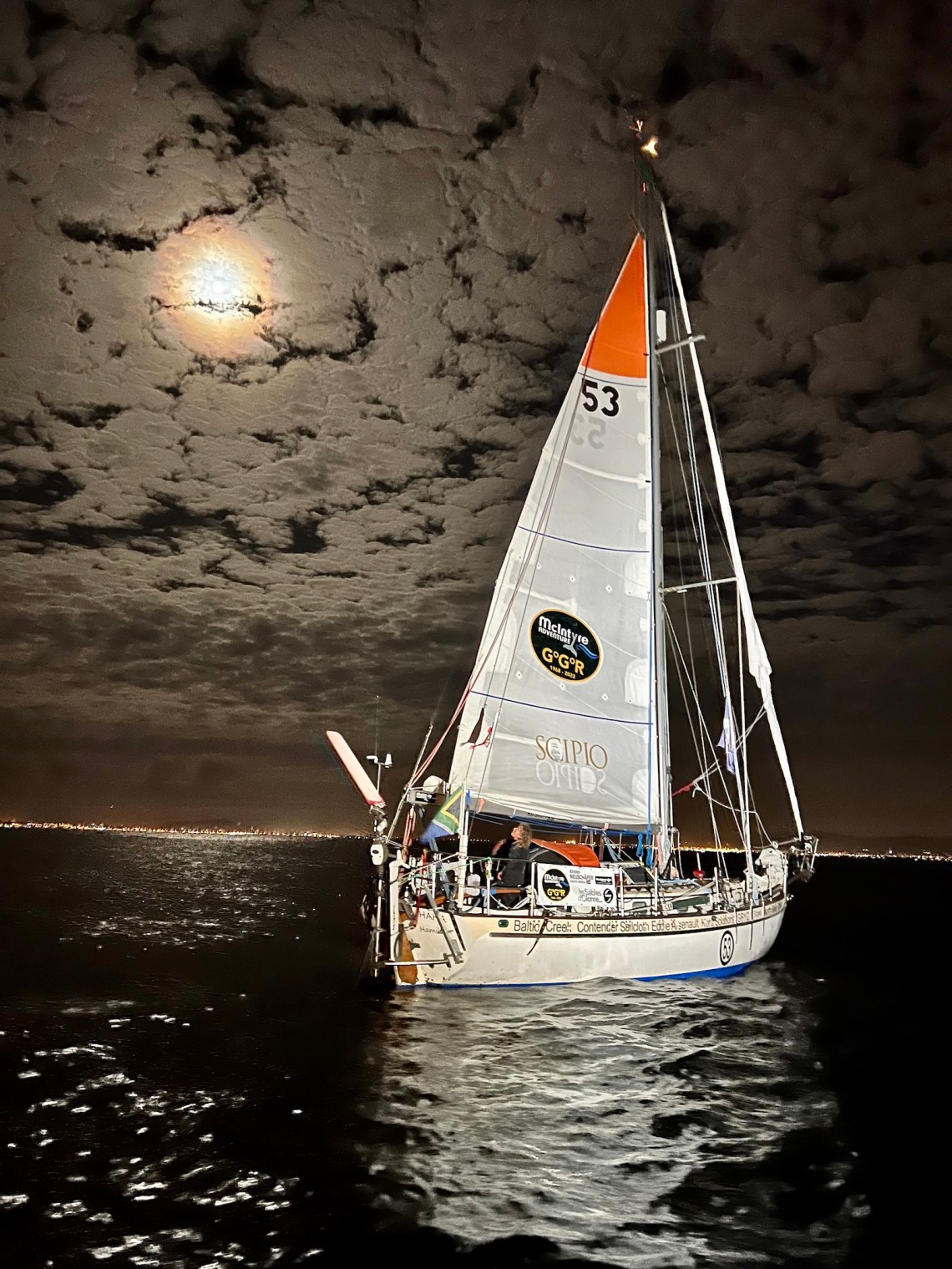For the past eight months I’ve been compulsively following what feels like a reality TV show in which every few weeks someone is forced off the set. It’s not a show, though, and the drama has remained mostly hidden from sight, taking place across several oceans. On September 4, 2022, sixteen solo sailors left France to race one another around the world. Now, having sailed east around the great capes of Africa, Australia, and South America, five of the skippers are back in the Atlantic and nearing France again, but only three remain in the main competition. The rest, including two who continue to sail in a subordinate class, have fallen by the wayside for all kinds of reasons—mechanical, meteorological, navigational, emotional.
A solo nonstop circumnavigation is never easy—only around 220 people have ever completed one—and the Golden Globe Race (known as the GGR) is a particular challenge because it’s old-fashioned. The sailors can’t rely on modern technology like GPS; they have to navigate by the sun and stars, using only a sextant and paper charts. Weather information is limited to barometer readings and to whatever the sailors can pick up via radio-based fax transmissions. Computers are not allowed, and satellite phones can be used only in emergencies or to communicate at set times with race headquarters.
The sailors can talk to whomever they can hail—passing ships or one another—by long-range high-frequency radio. The boats, shorter than thirty-six feet, must have been designed prior to 1988, a year chosen to ensure they remain “retro” but still structurally safe; they are slower and smaller than ultramodern racing boats, which can complete a nonstop circumnavigation in eighty days rather than the nine months it might take a sailor in the GGR. Despite the lengthy time at sea, entertainment is strictly analog: only paper books are allowed (no one ever seems to bring enough books), along with cassette tapes for music. “Sailing Like It’s 1968,” as the slogan of the race proclaims.
This refers to the year of the original Golden Globe Race, which was sponsored by Britain’s Sunday Times in a bid to boost circulation. The paper wanted to capitalize on the excitement generated by the record-breaking trip of Francis Chichester, who in 1967 completed a solo circumnavigation via the great capes with only one stop, a feat that got him knighted by Queen Elizabeth with the sword of the sixteenth-century circumnavigator Sir Francis Drake. The Times wanted to watch someone be the first to sail alone around the world without stopping at all.
No qualifications were needed to sail in that original race. Of the nine, mostly British, entrants, whose sailing experience ranged from none to quite a bit, one sank, five left the race along the way after damaging their boats, and one, a businessman and weekend sailor named Donald Crowhurst, is believed to have jumped overboard, committing suicide. (His logbooks, found on the abandoned boat, revealed that he’d been falsifying his position for months to make it seem like he’d sped around the globe, when in fact he spent the whole race drifting in the South Atlantic.) The only sailor to complete the race, in a thirty-two-foot ketch after 312 days, was Robin Knox-Johnston, a Brit, who now holds the honor of being the first ever nonstop solo circumnavigator. A seat-gripping 2006 documentary about that race, Deep Water, tells the full story of these sailors, tragic in the case of Crowhurst and intriguing in the case of a French sailor named Bernard Moitessier, who was in the lead but chose to drop out and just keep sailing “to save my soul,” unwilling to rejoin society. He ended up going around the world nonstop almost twice.





